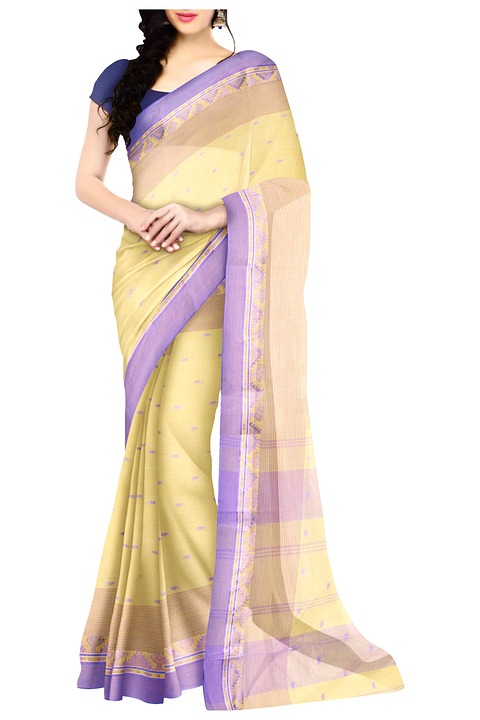The primary distinction between a saree and a half saree is that a saree measures around 4.5 to 9 meters in length, while a half saree measures 2 to 2.5 meters in length. Both sarees and half sarees come in a variety of designs, fabrics, styles, and colors. Sarees are a timeless garment and a popular choice for women as everyday wear, as well as for formal events. In contrast, half-sarees are typically worn by young girls and women, featuring more playful designs and lighter fabrics.
Key Takeaways
- The main difference between a saree and a half saree is their length, with sarees being longer (4.5 to 9 meters) and half sarees being shorter (2 to 2.5 meters).
- Sarees are a traditional garment worn by women across the Indian subcontinent, while half sarees are a traditional dress worn by young girls in Pakistan and South India.
- Half sarees are generally easier to drape than sarees and do not require pleating.
What is a Saree?
A saree is a 9-meter-long rectangular fabric worn by women in the Indian subcontinent. Typically embroidered and brightly colored, sarees are available in various materials such as cotton, silk, or synthetic. They are popular in both the local and international markets and can be worn by any woman in all seasons.
To wear a saree, a woman needs three basic garments: a blouse, petticoat, and saree. Sarees are first wrapped around the waist, with one end tucked into the petticoat. The middle section is then pleated and also tucked into the petticoat. The rest is pleated from the other end and draped across the left shoulder. Various methods exist for draping a saree, including Nivi, Himalayan, Gujarati drapes, and Bengali style, which involves no pleats.
What is a Half Saree?
A half saree is a traditional dress worn by young girls in Pakistan and South India, also known as langa vovi in Andra Pradesh, langa davani in Karnataka, and pavada davani in Tamil Nadu. Half sarees are typically worn by adolescent girls or unmarried women and are associated with a coming-of-age ritual, symbolizing a girl’s entry into womanhood.
A half saree consists of three parts: a skirt, a blouse, and a cloth draped over the upper body. The skirt, or langa or paavadai, is ankle-length and tied to the waist with a string. The blouse, or choli, is a tight-fitting upper garment. The voni or davani is the cloth that is draped over the shoulder, measuring about 2 to 2.5 meters long. It is tucked into the waist at one end, wrapped around the body, and draped diagonally across the front. The remaining fabric is hung over the right shoulder.
Half sarees are usually made from cotton or silk fabrics, with the langa and voni being brightly colored and contrasting with one another. The modern lengha style saree is inspired by half sarees. Although demand for half sarees as everyday wear has declined due to western clothing and shalwar kameez, they remain popular as evening wear. Traditional half sarees were simple and made of cotton and silk, but contemporary designs feature elaborate embroidery, zari work, and mirror work, as well as bold colors and materials such as nylon, crepe, chiffon, and georgette.
What is the Difference Between Saree and Half Saree?
The key difference between a saree and a half saree is the length, with sarees being longer and half sarees being shorter. Half sarees are generally easier to drape than sarees, as they do not require pleating.
Summary – Saree vs Half Saree
A saree is a 9-meter-long rectangular fabric worn by women in the Indian subcontinent, suitable for formal and daily wear. However, sarees can be difficult to wear and somewhat restrictive. On the other hand, a half saree is a traditional dress worn by young girls in Pakistan and South India, designed for casual wear and measuring only 2 or 2.5 meters in length. This makes half sarees easier to wear and less restrictive. This is the primary difference between saree and half saree.
